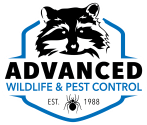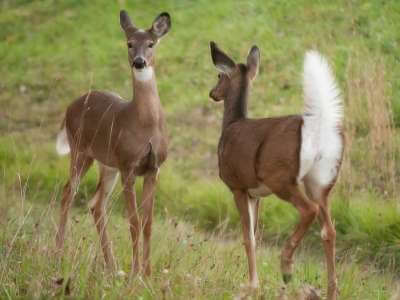So far this season we have received numerous calls from concerned citizens, most of which go something like this: “Hi, we found a baby deer that’s abandoned, the mom isn’t anywhere around. What do we do?”
Our best advice for these people? Do nothing.
Nine times out of ten, the baby deer that the caller is certain is abandoned is not actually abandoned. At the earliest stages of a fawn’s life, it is still too clumsy and awkward on it’s newly discovered legs, and it would be unable to successfully flee from a predator. As such, these babies are born with a few built-in defense mechanisms. One of these defense mechanisms is their coloring. The brown and white speckled coat of a fawn helps it blend into the forest floor, as this pattern imitates sunlight shining through the trees. Another one of their defense mechanisms is their ability to stay in one place, without moving, for hours. They likely won’t move even when you approach it, because their instinct is to remain still, and if they remain still they remain safe. Combined with their camouflaged coat, this helps the fawns to successfully hide from predators in plain sight. Baby deer also do not carry much of a scent, again making it harder for predators to identify them.
Does will often leave their fawns in a location they have deemed safe to go out and forage for food. The foraging location is often close by, but the doe may not return to check on the fawn for many hours. By leaving the fawn in what they considered a safe place, the doe ensures that even if a predator were to approach her while foraging, she would be able to successfully evade it without having to worry about whether the fawn could keep up in the flight. The safe places does choose may not always appear the safest place to us, as these areas can be in very public locations like parks or even in our backyards. However, the doe believed that with the fawn’s defense mechanisms, that location was a perfect place.
There are a few warning signs to identify if a baby deer has truly been abandoned. If you notice the fawn in the morning and it appears wet, as if the dew has collected on it, this is likely a sign that it is abandoned. While does will leave fawns for long stretches of time, they do not often leave them overnight. In addition, if the fawn has been alone for more than 10 hours at a time, it may be a sign that it is abandoned, as fawns feed approximately every 10 hours. If the fawn is calling out, which is unusual for a fawn normally, or near in location to a dead female, these could also be good indicators that the fawn is truly abandoned.
If you happen to come across a fawn that is curled up in tall grass but appears to be alone, even for hours on end, don’t feed it or move it. If you are truly concerned, monitor the baby over the course of the day, but otherwise please leave it be. Both mom and baby will thank you for it.

